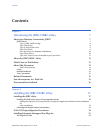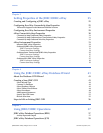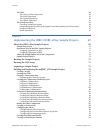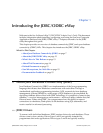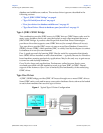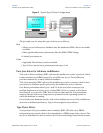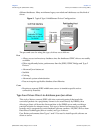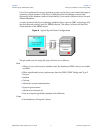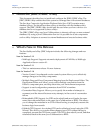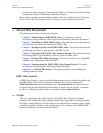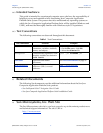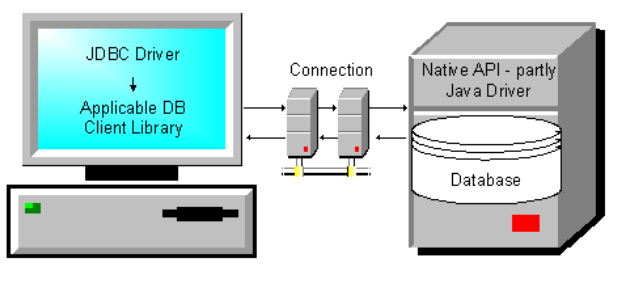
Chapter 1 Section 1.1
Introducing the JDBC/ODBC eWay About Java Database Connectivity (JDBC)
JDBC/ODBC eWay Adapter User’s Guide 10 Sun Microsystems, Inc.
Figure 2 Typical Type 2 Driver Configuration
The pros and cons for using this type of driver are as follows:
Pros
Allows access to almost any database since the databases ODBC drivers are readily
available
Offers significantly better performance than the JDBC/ODBC Bridge
Limited Java feature set
Cons
Applicable Client library must be installed
Type 2 driver shows lower performance than type 3 or 4
Pure Java driver for database middleware
This style of driver translates JDBC calls into the middleware vendor's protocol, which
is then translated to a DBMS protocol by a middleware server. The middleware
provides connectivity to many different databases.
This driver translates JDBC calls into the middleware vendor's protocol, which is then
converted to a database-specific protocol by the middleware server software.
Pros: Better performance than Types 1 and 2. Can be used when a company has
multiple databases and wants to use a single JDBC driver to connect to all of them.
Server-based, so no need for JDBC driver code on client machine. For performance
reasons, the back-end server component is optimized for the operating system on
which the database is running.
Cons: Needs some database-specific code on the middleware server. If the middleware
must run on different platforms, a Type 4 driver might be more effective.
Type Three Driver
A net-protocol fully Java-enabled driver translates JDBC API calls into a DBMS-
independent net protocol which is then translated to a DBMS protocol by a server. This
net server middleware is able to connect all of its Java technology-based clients to many




